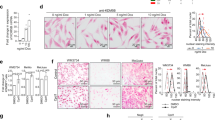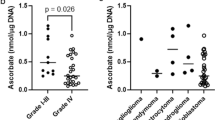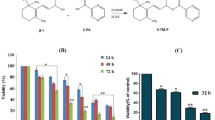Abstract
THE tissue of origin of a tumour is conventionally determined by histological examination. It has been possible to identify some tumours by their secretion of substances specific to tissue into the general circulation, Thus phaeochromocytomata—tumours which originate in chromaffin tissue—secrete large amounts of catecholamines, hormones normally manufactured by chromaffin tissue. Malignant carcinoids, derived from the enterochromaffin cells of the intestine, may secrete serotonin, a normal product of enterochromaffin cells. Phaeochromocytomata and malignant carcinoids respectively contain high concentrations of catecholamines and serotonin. These tumours presumably also contain the enzymes required to synthesize these compounds. Similar unique biochemical characteristics have not yet been described for tumours within the central nervous system. Recent studies from this laboratory have identified at least two enzymes which are highly localized in specific sites in the central nervous system. It was found that hydroxyindole-O-methyl transferase (HIOMT), the enzyme which O-methylates N-acetylserotonin to form melatonin1, is present almost exclusively in the pineal gland of several mammalian species2. HIOMT activity has been found to be of comparable magnitude in the pineal glands of human beings from 3 to 70 years of age, suggesting that calcification of the human pineal gland during adulthood does not interfere with this biochemical function3. Melatonin, the product of the enzyme action, has been found to exert an inhibitory influence on gonadal growth and on the oestrous cycle in rats4. Wurtman et al.5 have identified melatonin and HIOMT activity in a metastatic parenchymatous pinealoma and suggested the utility of this enzymatic assay in the diagnosis of this tumour.
This is a preview of subscription content, access via your institution
Access options
Subscribe to this journal
Receive 51 print issues and online access
$199.00 per year
only $3.90 per issue
Buy this article
- Purchase on SpringerLink
- Instant access to full article PDF
Prices may be subject to local taxes which are calculated during checkout
Similar content being viewed by others
References
Axelrod, J., and Weissbach, H., Science, 131, 1312 (1960).
Axelrod, J., MacLean, P. D., Albers, R. W., and Weissbach, H., in Regional Neurochemistry: Proc. Fourth Intern. Neurochem. Symp., Varenna, Italy, 1960 (edit. by Kety, S. S., and Elkes, J.), 307 (Pergamon, New York, 1961).
Wurtman, R. J., Axelrod, J., and Barchas, J. D., J. Clin. Endocrinol. Metab., 24, 299 (1964).
Wurtman, R. J., Axelrod, J., and Chu, E. W., Science, 141, 277 (1963).
Wurtman, R. J., Axelrod, J., and Toch, R., Nature, 204, 1323 (1964).
Axelrod, J., and Daly, J., Science, 150, 892 (1965).
Friedman, N. B., Cancer Res., 7, 363 (1947).
Axelrod, J., Wurtman, R. J., and Snyder, S. H., J. Biol. Chem., 240, 949 (1965).
Wurtman, R. J., and Kammer, H., New Eng. J. Med., 274, 1233 (1966).
Segaloff, A., in Methods in Hormone Research (edit. by Dorfman, R. I.), Chapter 17, 591 (Academic Press, New York, 1962).
Brown, D. D., Tomchick, R., and Axelrod, J., J. Biol. Chem., 234, 2948 (1961).
Snyder, S. H., and Axelrod, J., Biochim. Biophys. Acta, 111, 416 (1965).
Russell, D., J. Path. Bact., 56, 145 (1944).
Author information
Authors and Affiliations
Rights and permissions
About this article
Cite this article
SNYDER, S., AXELROD, J., SMITH, O. et al. Formation of Methanol by an Enzyme in an Ectopic Pinealoma. Nature 215, 773–774 (1967). https://doi.org/10.1038/215773b0
Received:
Revised:
Published:
Issue date:
DOI: https://doi.org/10.1038/215773b0



